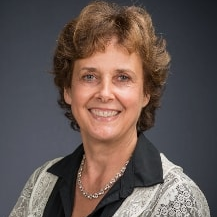Women in Male-Dominated Domains
A special issue of Social Sciences (ISSN 2076-0760).
Deadline for manuscript submissions: closed (15 December 2017) | Viewed by 121064
Special Issue Editor
Special Issue Information
Dear Colleagues,
This Special Issue will examine empirical and theoretical approaches to research on women’s underrepresentation in male-dominated domains. Papers may focus on the underrepresentation of women in certain high school courses, college majors, or occupations. This underrepresentation may be in Science, Technology, Engineering, and Math (STEM) or non-STEM-related courses (such as woodworking or welding), majors, or occupations (such as law enforcement and the trades). Articles on causes and consequences of females’ underrepresentation are welcome. Submission of manuscripts from a variety of disciplines such as psychology, sociology, economics, political science, and various STEM fields is encouraged.
Prof. Sylvia Beyer
Guest Editor
Manuscript Submission Information
Manuscripts should be submitted online at www.mdpi.com by registering and logging in to this website. Once you are registered, click here to go to the submission form. Manuscripts can be submitted until the deadline. All papers will be peer-reviewed. Accepted papers will be published continuously in the journal (as soon as accepted) and will be listed together on the special issue website. Research articles, review articles as well as short communications are invited. For planned papers, a title and short abstract (about 100 words) can be sent to the Editorial Office for announcement on this website.
Submitted manuscripts should not have been published previously, nor be under consideration for publication elsewhere (except conference proceedings papers). All manuscripts are thoroughly refereed through a double-blind peer-review process. A guide for authors and other relevant information for submission of manuscripts is available on the Instructions for Authors page. Social Sciences is an international peer-reviewed open access monthly journal published by MDPI.
Please visit the Instructions for Authors page before submitting a manuscript. Submitted papers should be well formatted and use good English. Authors may use MDPI's English editing service prior to publication or during author revisions.
Keywords
- Gender
- STEM
- Stereotypes
- Gender pay gap
- Self-efficacy
- Discrimination
- Sexual harassment
- Course selection
- Occupational preferences





